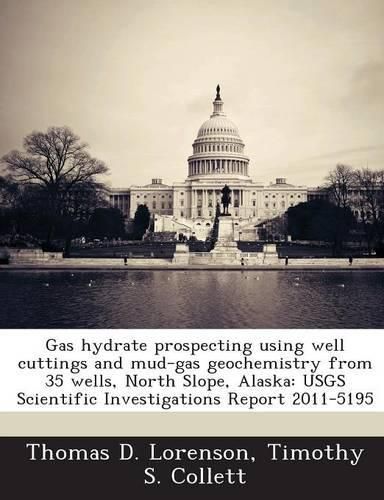Readings Newsletter
Become a Readings Member to make your shopping experience even easier.
Sign in or sign up for free!
You’re not far away from qualifying for FREE standard shipping within Australia
You’ve qualified for FREE standard shipping within Australia
The cart is loading…






Gas hydrate deposits are common on the North Slope of Alaska around Prudhoe Bay; however, the extent of these deposits is unknown outside of this area. As part of a U.S. Geological Survey (USGS) and Bureau of Land Management gas hydrate research collaboration, well-cutting and mud-gas samples have been collected and analyzed from mainly industry-drilled wells on the North Slope for the purpose of prospecting for gas hydrate deposits. On the Alaska North Slope, gas hydrates are now recognized as an element within a petroleum systems approach or \“total petroleum system.\” Since 1979, 35 wells have been sampled from as far west as Wainwright to Prudhoe Bay in the east. Regionally, the USGS has assessed the gas hydrate resources of the North Slope and determined that there is about 85.4 trillion cubic feet of technically recoverable hydrate-bound gas within three assessment units. The assessment units are defined mainly by three separate stratigraphic sections and constrained by the physical temperatures and pressures where gas hydrate can form. Geochemical studies of known gas hydrate occurrences on the North Slope have shown a link between gas hydrate and more deeply buried conventional oil and gas deposits. The link is established when hydrocarbon gases migrate from depth and charge the reservoir rock within the gas hydrate stability zone. It is likely gases migrated into conventional traps as free gas and were later converted to gas hydrate in response to climate cooling concurrent with permafrost formation. Results from this study indicate that some thermogenic gas is present in 31 of the wells, with limited evidence of thermogenic gas in four other wells and only one well with no thermogenic gas. Gas hydrate is known to occur in one of the sampled wells, likely present in 22 others on the basis of gas geochemistry, and inferred by equivocal gas geochemistry in 11 wells, and one well was without gas hydrate. Gas migration routes are common in the North Slope and include faults and widespread, continuous shallowly dipping permeable sand sections that are potentially in communication with deeper oil and gas sources. The application of the petroleum system model with the geochemical evidence suggests that gas hydrate deposits may be widespread across the North Slope of Alaska.
$9.00 standard shipping within Australia
FREE standard shipping within Australia for orders over $100.00
Express & International shipping calculated at checkout
Gas hydrate deposits are common on the North Slope of Alaska around Prudhoe Bay; however, the extent of these deposits is unknown outside of this area. As part of a U.S. Geological Survey (USGS) and Bureau of Land Management gas hydrate research collaboration, well-cutting and mud-gas samples have been collected and analyzed from mainly industry-drilled wells on the North Slope for the purpose of prospecting for gas hydrate deposits. On the Alaska North Slope, gas hydrates are now recognized as an element within a petroleum systems approach or \“total petroleum system.\” Since 1979, 35 wells have been sampled from as far west as Wainwright to Prudhoe Bay in the east. Regionally, the USGS has assessed the gas hydrate resources of the North Slope and determined that there is about 85.4 trillion cubic feet of technically recoverable hydrate-bound gas within three assessment units. The assessment units are defined mainly by three separate stratigraphic sections and constrained by the physical temperatures and pressures where gas hydrate can form. Geochemical studies of known gas hydrate occurrences on the North Slope have shown a link between gas hydrate and more deeply buried conventional oil and gas deposits. The link is established when hydrocarbon gases migrate from depth and charge the reservoir rock within the gas hydrate stability zone. It is likely gases migrated into conventional traps as free gas and were later converted to gas hydrate in response to climate cooling concurrent with permafrost formation. Results from this study indicate that some thermogenic gas is present in 31 of the wells, with limited evidence of thermogenic gas in four other wells and only one well with no thermogenic gas. Gas hydrate is known to occur in one of the sampled wells, likely present in 22 others on the basis of gas geochemistry, and inferred by equivocal gas geochemistry in 11 wells, and one well was without gas hydrate. Gas migration routes are common in the North Slope and include faults and widespread, continuous shallowly dipping permeable sand sections that are potentially in communication with deeper oil and gas sources. The application of the petroleum system model with the geochemical evidence suggests that gas hydrate deposits may be widespread across the North Slope of Alaska.